What basic kit do I need for trail running? Clothing, footwear, backpack, hydration, poles, food, lighting, safety...here we’ll talk about all the essentials.

A passion for trail running. Photo: Gran Maratón Montañas de Benasque
Trail Running: The Importance of Having the Right Gear
According to the statistics, not having the right gear, being in poor physical condition and lacking experience in the mountains are the main causes of accidents in trail races.
We are not only referring to performance gear, that which allows us to be faster or more efficient. Safety is also very important. You will always need to carry warm clothes, water, and some food (and this forces us to carry some kind of backpack, as we will see) in case of emergencies.
Remember that, especially for those who are coming from a road running background or other urban or asphalt-based athletic disciplines, running in the mountains has an important part of physical fitness, but that it also has a part of knowledge of the outdoors and the risk factors associated with this type of activity.
Getting started in trail or ultra running through organized races is an excellent idea, as you will be able to take advantage of the race infrastructure, in addition to being accompanied by the rest of the participants. This is much safer when getting started then going on long, technical trail runs in the mountains on your own. Be sure to build up some experience through organized events.

Participants in the Gran Trail Montañas de Benasque Race. Photo: GTMB
Basic Gear for Trail Running
1. Footwear
Trail running shoes are essential. Never try to run in the mountains with road running shoes.
The choice is more complex than it seems. The type you need will depend on the terrain and distance. Don’t take this lightly, as your safety is at stake.
When talking about different types of running shoes for mountain running, we mainly refer to safety. In fact, it is the first, basic element to consider in any kind of decision, including the equipment you should choose and carry.

Hoka One One Mafate Speed 3. Trail running shoes with exceptional cushioning
Broadly speaking, there are 4 types of trail running shoes:
With their slight variations, we can divide trail shoes into 4 main groups, from short to long distance:
- 1. Cross and Vertical Race shoes
- 2. Half Marathon shoes
- 3. Marathon shoes
- 4. Ultra-distance shoes
And here comes the golden rule: THIS LIST ONLY WORKS IN ONE DIRECTION .
That is to say: you can run a marathon, a cross, or a half marathon with ultra-distance shoes, but not the other way around.
Why? In this article, How to Choose the Right Trail Running Shoes for You you can read an in-depth explanation on soles, types of runners, weight, types of races, cushioning, last, fitness...
2. Technical Clothing for Mountain Running
Many may assume, especially those who come from road running, that clothing is very similar for trail running.
It can be, but only partly.
All running clothing has to allow freedom of movement and comfort, but due to the harsh nature of mountains environments it has to provide protection against:
- Abrupt weather changes
- Extreme cold
- Extreme heat
- Rain, hail and snow
- Hostile environments (scratches, bruising, etc)
The reason protective clothing is so important is that, unlike road running, in the mountains you are likely to find yourself far away from any kind of shelter and you need to rely on what you have to ensure your safety.

Luis Alberto Hernando, training near Jaca, Spain. Photo: Barrabes/Adidas Terrex
Urban running in the cold and rain does not put us at great physical risk, nor is it psychologically important. In mountain environments, on the other hand, you must be self-sufficient and capable of getting yourself out of difficult situations. You may be forced to stop by the weather conditions or find yourself with insufficient protection and these can bring serious consequences.
For more details on winter and summer clothing and protection, compression garments and general tips and tricks, read our articles on What to Wear for Trail Running and Mountain Races, and How to Choose Compression Clothing for Outdoor Competition
and, of course, let’s not forget the essential complements: hats, gloves, etc.
3. Backpacks, Vest-packs and Waist Packs for Trail Running
On mountain terrain, it is essential to be able to carry the items that will give you the protection and safety you need against the elements as well as hydration and nutrition.
Always remember, that it is the mountain environment and conditions that dictate what you should wear on your trail running adventures.
- Begin by assessing what equipment is required to ensure safety against unforeseen situations. Depending on the place, type of terrain, distance, conditions, time of the year, etc.
- Then choose which backpacks are the right size for carrying this equipment, from the different systems and capacities that suit your body shape and size.
If you begin by choosing a minimalist backpack without thinking about what needs to go inside (a common mistake), you run the risk of having to leave essential items behind, putting your safety at jeopardy, all for the sake of saving a few grams.

Raidlight Revolutiv Vest 12 L trail running vest-pack
The choice is not always easy: you need to find a balance where you are able to carry all the essentials, without any unnecessary extras to ensure you combine maximum safety with the lightest load.
Not all mountain running backpacks have the traditional design. The most commonly used packs for trail running are like the one in the photo above, which is a mix between a vest and backpack to provide a wrap around fit.
Our article on, How to Choose your Backpack for Mountain Activities, compares the different types of backpacks, vest-packs and hipbelts; the pros and cons, functions and which is best for your needs.
4. Hydration
Endurance activities can exceed 24 hours. Add to this the difficulty of breathing at high altitude, the scorching sun or abrupt changes in temperature, while running through remote areas with no possibility of a quick escape.
All this and much more can be expected in a trail running race. In such conditions, proper hydration becomes of vital importance.
There are many varieties of hydration systems: flexible reservoirs, soft or rigid bottles integrated in the pack, straps, vests, hipbelts, hand harnesses, water purifying bottles, cups... and each has its use.

Backpack with dual system: reservoir in pack and water bottles on shoulder straps. Photo: Salomon
In our article on How to Choose a Hydration System for Trail Running, we give details and tips to help you solve any queries to choose the best system for you.
5. Poles
There are several benefits to using poles:
- Poles distribute the workload between the upper and lower body. Studies indicate that between 15 and 20 percent of the strain is released from the lower body and shared with the upper. Fatigue is also reduced, preventing the risk of injury.
- The joints, especially the knees, are relieved of pressure during the descent.
- Poles give more points of support, which increases safety, not only on the descent, but in a number of situations, from crossing a river to running on difficult terrain.
- They are also useful for defence from animals.
Poles can sometimes get in the way and at times are unnecessary when running. However, in mountain environments, sooner or later they will play an important role on difficult sections, such as complex ascents and descents, where you are unable to run.

Grivel Trail 3 Folding Poles
For this reason, it is essential that your poles can be carried comfortably when not in use, so that you can run freely.
This article on, How to Choose Your Trekking, Mountain and Trail Running Poles, explains the different types and gives advice on how to choose the most suitable for trail running.
Other Mountain Running Equipment
1. Sunglasses for Trail Running
In the mountains, solar radiation, snow and wind can do a lot of damage to your eyes. Mountain goggles offer different types of protection and are an essential piece of equipment.
2. Energy Bars and Gels
During long and intense activity, it is normal to find you need instant and effective energy. This is achieved with energy bars and gels.
This article on What to Eat During Intense Mountain Activity, talks about the different types of energy bars and gels and when to use them.
3. Mountain Smartwatches
Mountain smartwatches are not only useful for marking your running time. They also have essential functions, such as a barometer, compass, GPS or altimeter.
4. Headlamps
In the mountains there is no artificial lighting, so a headlamp is fundamental for racing at night or for early starts.
How to Choose a Headlamp
5. Thermal Blanket, Whistle, Phone Charger, Tracking Device
You should always carry these elements for your safety, when you are running in remote areas.
A thermal blanket protects you both from the heat and cold, while a mobile phone is essential for communication, in case of an emergency.

Emergency Survival Blanket
If you are running alone, since you will not always have coverage, you may want to think about using a satellite tracking device.

Spot Gen-3, tracking device
A whistle is mandatory. But before you buy one, check your backpack, as most nowadays have a whistle built into the chest strap attachment.
This type of whistle is only loud enough for close proximity. If you find yourself in a situation where you need to be heard at a distance (in the fog, for example), we recommend a larger, traditional whistle, (these weigh under 10 grams) but not with the pea system as the whistle is usually attached to the shoulder strap and the noise of the pea constantly bouncing inside the whistle is irritating on long runs.
6. Blister Protection
Protecting sensitive areas is essential on long treks in the mountains and ultra-trails and this makes life much easier.

Care Plus Camphor Spray Blister Protection
Be sure to browse our online store for all your trail running and outdoor needs:
www.barrabes.com/en-gb/




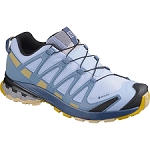


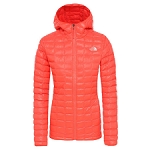
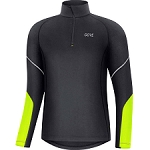

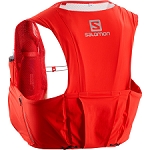

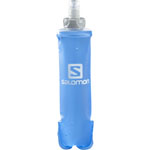




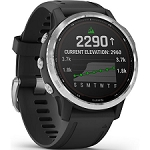








Leave a comment
Be the first to comment on this article.